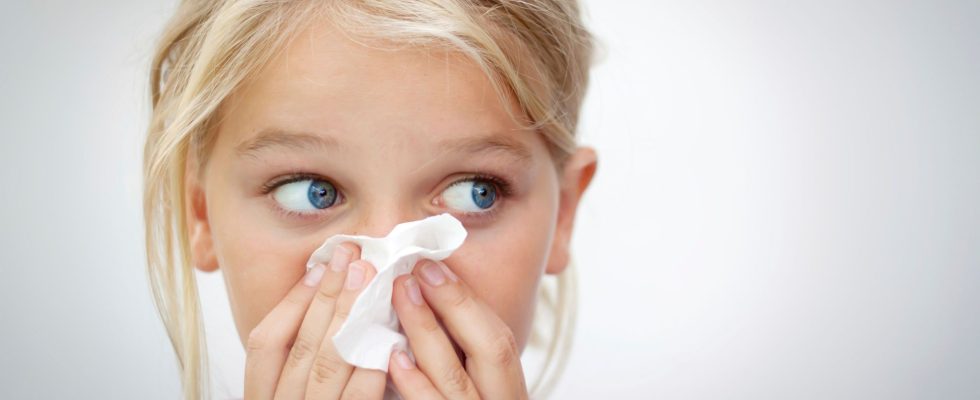It’s the beginning of August, and you divide your days between the beach and the air-conditioned interior of the car, the office or the shopping malls. The thermometer is around 25 degrees on the coolest days, exceeds 30 if you live in the South. However, it had to fall on you: runny nose, irritated throat, cough and feeling of fever… In the middle of summer, you are the victim of a good old cold. But how can you catch a “cold snap” during the hottest months of the year?
What is a cold?
Referring to an inflammation of the airways – that is, the nose, eyes and mouth – the common cold is nothing more than a set of mild symptoms caused by a virus. Or rather by a panel of viruses: there are over 200 different types that can cause a cold or flu, according to the American Lung Association, which makes their treatment ineffective – hence the recurring instruction from doctors to be patient. The most common, responsible between 10 and 40% of the time, are rhinoviruses. They cause rhinitis, rhinosinusitis and other nasopharyngitis. The latter develop ideally in environments around 33 degrees, that is, those found inside the nasal passages.
“The upper airways are the first filter of environmental molecules like viruses, which gravitate around us – in particular the nose, whose internal hairs serve as a barrier. When there is congestion, this first filter ignites”, develops Faïza Bossy, general practitioner in the Paris region and science popularizer. In summer, the common cold is sometimes confused with allergic rhinitis, ie seasonal allergies to pollen, also called hay fever.
Clim’and heat wave, the new combo
The culprit is therefore in reality not the cold which, in itself, cannot make someone sick. “But rather the sudden variations in temperature”, explains the doctor. “In summer, they can be due, for example, to a sudden drop in temperature after a heat wave, or to excessive air conditioning inside,” she continues. These thermal attacks not only dry out the mucous membranes, causing inflammation and making them more susceptible to viruses, but also lead to a reduction in the immune defenses of our body, which is then forced to react to viruses.
If a cold snap is not responsible for the disease, the consecrated expression falls apart. “It must be said that sudden climate changes towards high temperatures, such as heat waves, are very recent in our history, points out the scientist. We are emerging from twenty centuries during which our bodies had to adapt to the cold. And now we learn to adapt to the heat.”
A cliché not completely debunked
We cannot deny it, the number of runny noses nevertheless multiplies drastically with the arrival of the first winter winds. “Viruses are present all year round, explains Faïza Bossy, but they only live and spread when they have hosts to welcome them.” The dry air encountered mainly during the winter months, caused in particular by indoor heating, facilitates the spread of the virus. A study by the scientific journal PLOS, published in 2013, specifies that the humidity present in the air prevents contagion, because the virus attaches itself to water droplets when it is expelled by sneezing or coughing. When the air is dry, it travels more from host to host through the air.
Human behavior in the winter season, conducive to confinement and closed and heated spaces, also promotes the proliferation and transmission of these viruses that cause colds. “Many people do not ventilate their homes in winter to keep out the cold, and therefore do not allow air renewal and promote the transmission of viruses within the family”, continues Faïza Bossy. Conversely in the summer period, “the children, who are privileged and very contagious guests, are on vacation and do not become infected at school, and many people spend more time outside… The virus therefore circulates less, even if he is present!”, concludes the doctor.
